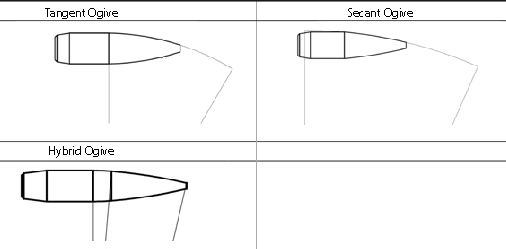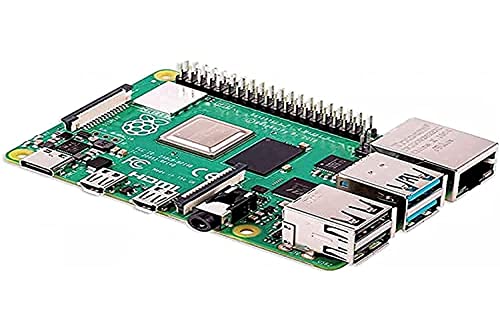The design of a bullet is a complex interplay of various components, each playing a crucial role in determining its performance. Understanding the intricacies of bullet design is essential for anyone interested in firearms, whether it's a hunter seeking to optimize their shot placement or a competitive shooter looking to gain an edge. However, with so many different types of bullets available, it can be overwhelming to navigate the world of bullet design. This article aims to demystify the complexities of bullet design by breaking down its various components and features. From the nose to the base, we'll explore each part of a bullet and how they work together to affect its flight dynamics, accuracy, and overall performance. By gaining a deeper understanding of bullet design, readers will be better equipped to make informed decisions about their ammunition choices.
The Nose
The nose, also known as the meplat or tip, is the forward-facing portion of a bullet. It's the first point of contact with the air, and its shape plays a significant role in determining the bullet's performance. The meplat is typically a flat or rounded surface that serves as the leading edge of the bullet.
The nose is responsible for piercing through the air and creating a path for the rest of the bullet to follow. A well-designed nose can help reduce drag, improve accuracy, and increase penetration depth. Conversely, a poorly designed nose can create turbulence, leading to instability and reduced performance.
Different nose shapes have distinct effects on flight dynamics. For example:
- Spitzer bullets feature a pointed nose that slices through the air with minimal drag. This design is ideal for high-velocity cartridges, where aerodynamics are critical.
- Round-nose bullets, on the other hand, have a more gradual curve that helps to reduce shock and vibration upon impact. These bullets are often used in lower-velocity applications, such as hunting large game at close range.
- Hollow-point bullets feature a recessed nose that expands upon impact, creating a larger wound channel. This design is typically used for self-defense and law enforcement applications.
The shape of the nose can also affect the bullet's expansion and penetration characteristics. A well-designed nose can help to control the rate of expansion, ensuring consistent performance in various shooting scenarios.
The Ogive (Ogival Curve)
 The ogive, also known as the ogival curve, is the curved section that connects the nose to the body of a bullet. Its primary purpose is to reduce drag by creating a smooth transition from the pointed nose to the cylindrical body.
The ogive, also known as the ogival curve, is the curved section that connects the nose to the body of a bullet. Its primary purpose is to reduce drag by creating a smooth transition from the pointed nose to the cylindrical body.
The ogive curve helps to minimize the disruption of airflow around the bullet, allowing it to cut through the air with greater ease and efficiency. This reduction in drag leads to improved accuracy, increased range, and reduced wind deflection.
Different ogive shapes have distinct effects on aerodynamics:
- Secant ogives feature a more gradual curve that provides a smooth transition from the nose to the body. This design is often used for high-velocity cartridges, where minimizing drag is critical.
- Tangent ogives, on the other hand, have a sharper curve that creates a slightly greater disruption of airflow around the bullet. However, this design also helps to improve expansion and penetration characteristics upon impact.
- Hybrid ogives combine elements of both secant and tangent designs, offering a balance between aerodynamics and terminal performance.
The ogive shape can also influence the bullet's stability in flight, particularly at high velocities. A well-designed ogive curve can help to maintain a stable flight path, while an poorly designed one can lead to wobbling or tumbling. By optimizing the ogive shape, manufacturers can create bullets that fly straighter and more consistently, resulting in improved accuracy and performance.
The Body (Cylindrical Section)
The body is the main cylindrical section of a bullet that follows the ogive curve. It's typically the longest portion of the bullet and plays a critical role in providing stability in flight.
The body section helps to maintain a consistent aerodynamic profile, which is essential for accuracy and range. The cylindrical shape creates a stable flow of air around the bullet, reducing turbulence and drag. This stability also enables the bullet to fly straighter and resist wind deflection.
Different body lengths and diameters have distinct effects on performance:
- Longer bodies tend to be more aerodynamic and provide better accuracy at longer ranges. However, they can also make the bullet more sensitive to wind and air resistance.
- Shorter bodies, on the other hand, are often used for hunting larger game or for self-defense applications where expansion is critical. They may sacrifice some accuracy at longer ranges but offer improved terminal performance.
- Thicker diameters provide added weight and momentum, which can improve penetration and stopping power. However, they can also increase drag and reduce aerodynamics.
The body section also influences the bullet's center of gravity (CG) and its moment of inertia. A well-designed body shape can help to optimize the CG and reduce wobbling or tumbling in flight. By carefully balancing the length, diameter, and weight distribution of the body, manufacturers can create bullets that fly consistently and accurately over long ranges.
Additional Features - Jacket, Core, Partition, Cannelure
In addition to the nose, ogive, and body, a bullet typically features several other critical components that work together to ensure optimal performance. These include the jacket, core, partition, and cannelure.
Jacket: The jacket is the outer layer of the bullet that surrounds the core. Its primary purpose is to prevent deformation during flight and upon impact. Jackets are typically made from a variety of materials, including:
- Copper: A popular choice for hunting bullets, copper jackets offer excellent penetration and expansion characteristics.
- Brass: Often used for target shooting and competition rounds, brass jackets provide a consistent and accurate performance.
- Nickel-plated: Some manufacturers use nickel-plating to improve the bullet's appearance and reduce corrosion.
The jacket material plays a crucial role in determining the bullet's terminal performance. For example, copper jackets tend to be more effective at expanding and transferring energy to the target, while brass jackets may provide better accuracy and consistency.
Core (Lead Core): The core is the central portion of the bullet that provides its mass and stability. Cores are typically made from lead or a lead alloy, which offers an ideal balance between density and cost. The core material determines the bullet's weight and center of gravity (CG), both of which affect its flight characteristics.
Partition: The partition is the dividing line between the jacket and the core. Its design plays a critical role in determining the bullet's expansion and fragmentation characteristics upon impact. Different partition designs include:
- Solid partitions: A single, solid piece of material that separates the jacket from the core.
- Segmented partitions: Multiple small segments or "petals" that separate the jacket from the core, allowing for more consistent expansion.
The partition design affects how the bullet expands and transfers energy to the target. For example, segmented partitions tend to provide a more controlled expansion, while solid partitions may result in a more aggressive fragmentation pattern.
Cannelure (Canneling): A cannelure is a groove or depression on the surface of the bullet that serves as a crimping point for the cartridge case. Cannelures are typically located near the base of the bullet and provide a secure seating for the case, ensuring consistent ignition and performance.
These additional features work together to ensure optimal bullet performance. By carefully selecting materials and designs for each component, manufacturers can create bullets that offer excellent accuracy, consistency, and terminal effectiveness.
The Base - Boat Tail (Base Cavity)
The base of a bullet is its rear-most portion, which includes the boat tail feature. The boat tail is a concave shape at the back of the bullet that serves to reduce drag and improve accuracy.
By reducing the amount of surface area at the rear of the bullet, the boat tail decreases the turbulence created as the bullet travels through the air. This results in a more stable flight path and improved penetration. Additionally, the boat tail helps to counteract the yawing motion caused by wind resistance, ensuring that the bullet flies straighter.
Different base shapes can affect performance in various ways:
- Flat bases: Provide a larger surface area at the rear of the bullet, which can increase drag and reduce accuracy.
- Pointed bases: Can improve aerodynamics but may also be more prone to yawing due to their smaller surface area.
- Tapered bases: A compromise between flat and pointed bases, offering improved aerodynamics while still providing a stable flight path.
The design of the base is critical in determining the bullet's overall performance. By carefully balancing the shape and size of the boat tail with other features such as the nose and ogive, manufacturers can create bullets that offer exceptional accuracy, range, and terminal effectiveness.
Conclusion
In this article, we delved into the intricacies of bullet design, exploring its various components and features that work together to determine its flight dynamics, accuracy, and overall performance. From the nose to the base, each part plays a crucial role in ensuring optimal results. We examined the different shapes and designs of the nose, ogive, body, jacket, core, partition, cannelure, and boat tail, and how they impact bullet behavior.
Understanding the complexities of bullet design is essential for anyone seeking to optimize their shot placement or gain an edge in competitive shooting. By recognizing the importance of each component and feature, shooters can make informed decisions about their ammunition choices, ultimately leading to improved accuracy and effectiveness. Whether you're a seasoned marksman or just starting out, grasping the fundamentals of bullet design is vital for achieving peak performance.
